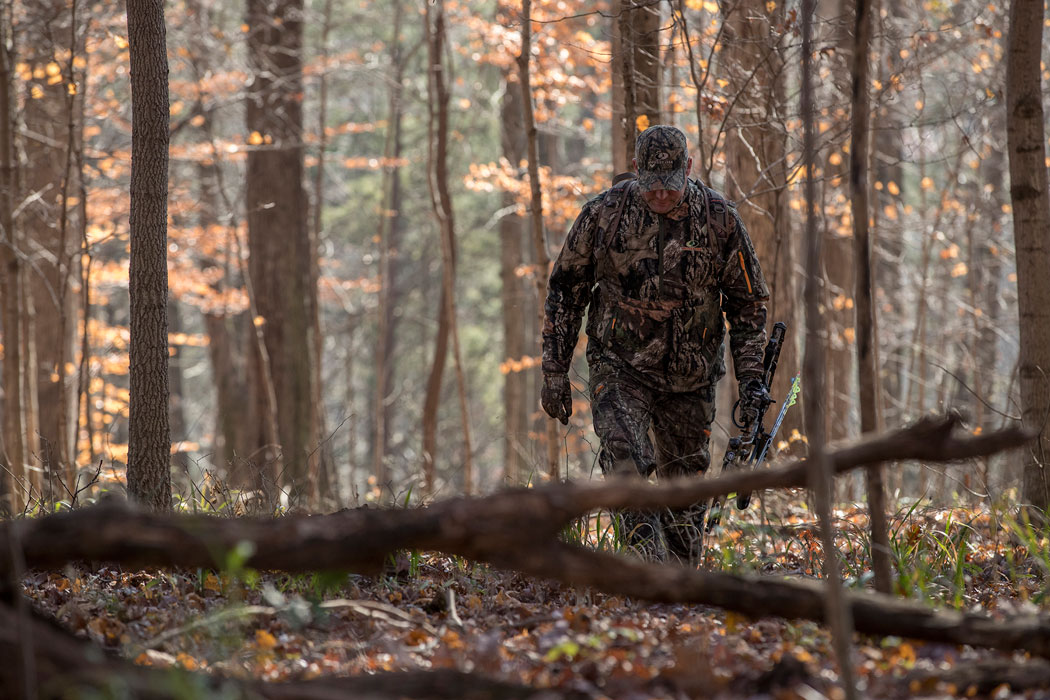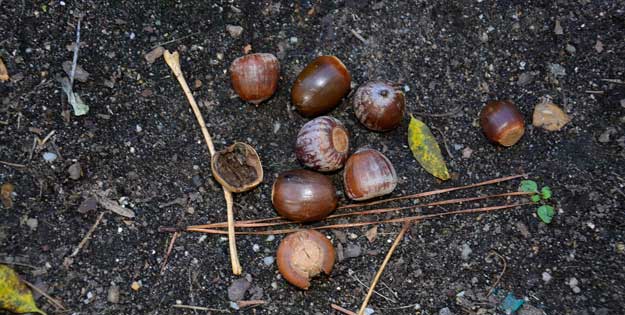Bob Walker | Mossy Oak ProStaff

October in west-central Alabama where I live and hunt is usually the driest month of the year. So besides walking wet-weather creeks and searching for small potholes of water, I also look for springs. Springs not only bring up water from underground to the surface. Oftentimes the water that the springs bring up has minerals that create natural mineral licks for the deer. Just before bow season, finding water and mineral licks often can be just as important as knowing when certain oak trees drop their nuts. When water and minerals are in short supply, they’ll draw deer like a magnet.
If you don’t have any springs on the property you hunt, put out commercial mineral licks.That’s what I do, and I usually set up a trail camera on the mineral lick to see the sex of the deer coming to the lick and to watch the bucks’ antlers grow. Mineral licks can be very effective for drawing deer just before and sometimes during early bow season. I also mark my mineral licks as waypoints. Then from my trail-camera surveys, I enter what time of the day or night the deer are showing up at each mineral lick I establish.
I search for deer trails that cross roads, dirt roads and trails on the edges of fields. I also look for places that have a dramatic change in the timber like the edges of clear cuts and different ages of pine stands, or where a hill or a mountain drops off to bottomland oak flats. Those are great places to look for and locate deer trails.
Public Land Scouting:
I've been very successful hunting an Illinois WMA in past years. So, I want to go up and scout to see what changes have taken place since I last hunted there. This region also has a dewatering area that gets flooded for waterfowl season. I want to see how much water is being used to flood a portion of this WMA, and if I'll be able to cross that water to get to some of the spots I want to hunt.
I have an old friend who lives near this WMA, and he told me that some type of tree bug had killed quite a few trees on this WMA, and those trees had fallen down. I want to check out those spots to make sure I can get to a place that I want to hunt, and I want to see how the deer are navigating through those downed-tree places. I also want to know if those fallen trees have opened up the tree canopy, permitting more sunlight to hit the ground. There should be a lot of browse where the trees have died.
If you hunt public-hunting areas, realize that the land often changes and sometimes dramatically from one year to the next. Even if you have great spots to take deer on public-hunting areas, you still need to scout two or three weeks before you're hunting to learn what changes have occurred, if any, and determine where the deer are most likely to walk by the trails they leave.
The first year I hunted this WMA in Illinois I took a really nice buck up there. The second year I went to the same WMA, I learned that a tornado had come through the WMA and had blown down quite a few red oak trees. When I scouted the spot I’d hunted the previous year, I found that one of the big red oaks where I’d taken a deer a year before had been blown down. The falling of that tree had narrowed the funnel area down that I was hunting, and it actually caused an increase in the number of deer traveling through that area.
Natural occurrences that cause the land and timber to change are not necessarily bad, as long as you learn before you hunt how those land changes have affected deer movement. If you’ve counted on an oak tree to provide food for the deer, it’s best to check it out before you hit the woods.






























